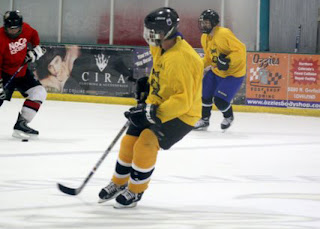 |
| MTV: active 1981 to, well, 1998 or so. |
|
At 12:01 on August 1, 1981, Trevor Horn and Geoff Downes—who insisted on referring to themselves as “The Buggles,” for some appalling reason—announced, to the dismay of the cable-television-viewing world, that the radio star had been killed. Even more shocking was their claim that the death was, in fact,
murder—and that the guilty party was none other than Video, the radio star’s longtime collaborator and sometime rival.
In more recent years, murder and music have intertwined often enough to leave the public jaded and desensitized—Marvin Gaye was shot by his own father in 1984; Tejano singer Selena was murdered by the former president of her own fan club in 1995; rappers Tupac Shakur and Biggie Smalls were killed less than six months apart in 1996 and 1997; famed “Wall of Sound” record producer Phil Spector killed actress Lana Clarkson in 2003; and, of course, the Flaming Lips famously butchered Queen’s
Bohemian Rhapsody in 2005.
In 1981, however, a more innocent world still reeled from the death of John Lennon (apparently a moderately well-established musician in his own right),
and was captivated by the simple fact that The Buggles, for all their dense and timeless lyrical artistry,
failed to mention the name of the murdered radio star—so it could have been practically anybody.
. . . well, not
anybody. They distinctly used the phrase “radio
star” at least a dozen times, which suggests that the victim could not have been, for example,
Donnie Iris,
Joey Scarbury, The Vapors, or anyone from the Sugarhill Gang or
Lipps, Inc. But practically
anybody else.
News of Video’s supposed guilt spread rapidly, especially among insomniacs, the jobless, and teenage malcontents watching TV without proper supervision. The accusation caught fire in part because of video’s well-established (and perhaps deserved) reputation as a corrupting influence on the young, a useless degenerate, and a crass defiler of all that used to be good, pure, and right about the world.
1 The radio star, who was heard back on the wireless as early as 1952, had already had its heart broken “by pictures” [that is, “moving pictures,” one of Video’s many aliases], so it was no great leap to conclude that Video was guilty of murder.
 |
Video: Tried and convicted by the media, which is kind of ironic,
when you think about it. Unless it’s not—irony is a tough concept
and we’re not sure we get it. Thankfully, we know you don’t either. | |
The prosecution’s case, however, could not withstand its star witnesses’ inexplicable assault on their own credibility. They personally urged the jury to “put the blame on VTR [Video Tape Recorders],” and displayed a bizarre and confusing distrust of “machines and technology,” going to far as to demolish the court recorder’s stenotype machine and swallow several of the pieces before being restrained by bailiffs.
 |
The accusers. And yes, we all
dressed just like this in 1981. |
Most bizarre, though, was Trevor Horn’s obvious mental unraveling on the stand. Asked to describe the scene of the murder, Horn, confused or possibly deranged, claimed that it took place “In my mind . . . and in my car,” thus either implicating himself in the crime or inadvertently suggesting that it was all a product of his troubled imagination.
Charges against Video were eventually dismissed. The long-awaited coroner’s report stated that the radio star died when its motorcycle crashed into a helicopter, having lost control after suffering from a heart attack induced by choking on vomit. The coroner's toxicology screen showed that the radio star’s blood contained fatal levels of alcohol, cocaine, methamphetamines, heroin, paint thinner,
2 dihydrogenous oxide, hydrochlorothiozide, and perhaps the most unpredictable and concentrated drug of the middle decades of the twentieth century—half a pint of Ozzy Osbourne’s blood.
The death was ruled an accident.
The radio star was
27.
 |
| One small step for [a] man (right), one giant waste of man’s time (left). |
NOTES
1. Opinions expressed at Bowling in the Dark do not necessarily reflect the opinions of the staff at Bowling in the Dark.
2. Or possibly Everclear. Chemically speaking, they’re essentially the same thing, although it’s possible that drinking paint thinner is less dangerous.













